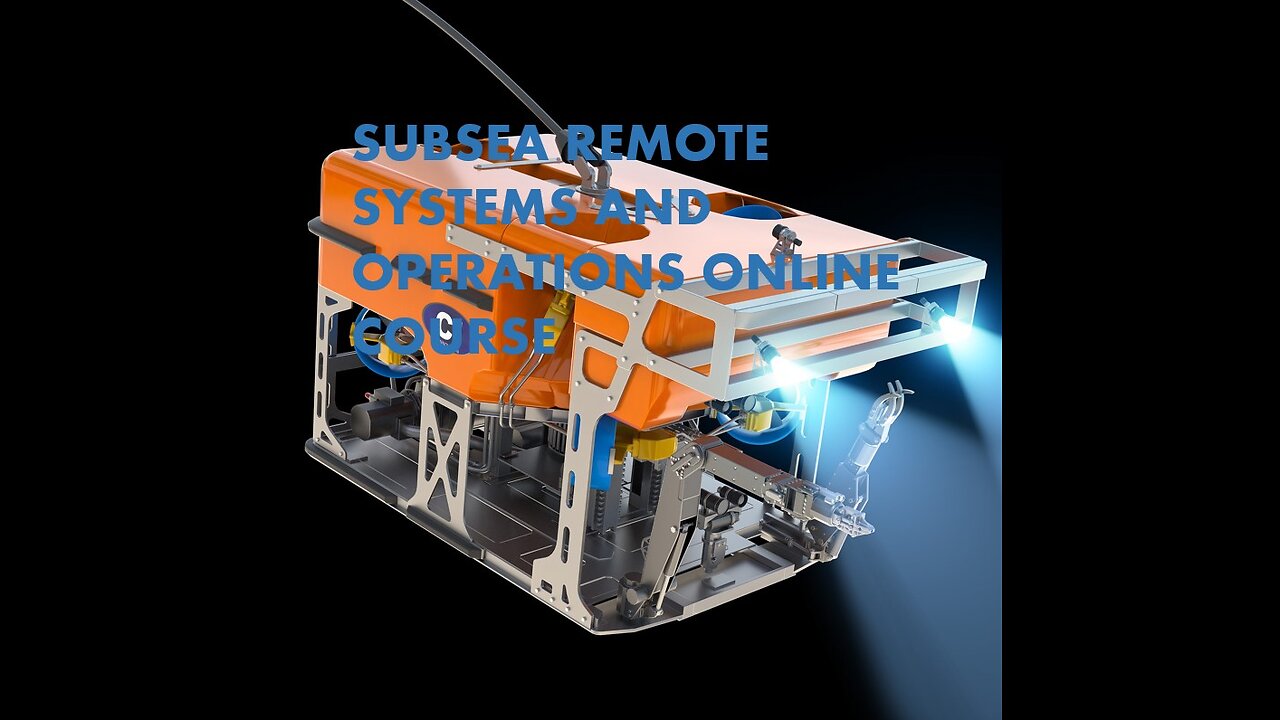Premium Only Content

Subsea Remote Systems and Operations Online Course
Just as Remote Operations (RO) have been embraced for audits and inspections on surface assets, RO using ROVs with the pilots located many miles away, are becoming increasingly common and, for certain tasks, may soon become the norm. Despite the technology being in place for a number of years, and several successful trials, there has previously been resistance to such operations. However, the pandemic has – as in many other areas of our work – brought about a rethink in many contractors’ approaches which has seen their popularity increase as they seek to improve the efficiency of their operations. While it is still currently unlikely that RO will be utilised for heavy duty construction and trenching work, subsea inspection, survey and light intervention work scopes remain likely candidates for the transition to remote operation.
There are two main areas where ROV RO is likely to be implemented, resident seabed systems and Uncrewed Surface Vessel (USV) operations.
Resident seabed systems
The ROV resides in a subsea garage or ‘cage,’ awaiting instructions for work. This could equally apply to an AUV. These systems are usually skid mounted and lowered to the seabed from a vessel. The skid may be powered from a local asset or, for shorter term work, by battery packs.
USV Remote Operations
USVs have been used as platforms on which to mount survey equipment, but as vessels are becoming larger and more sophisticated. Benefits of USVs are much smaller vessels, no offshore crew, a lower carbon footprint and the ability to use more advanced and cleaner fuels.
For full videos you can visit this link :
https://drive.google.com/file/d/1hBzeDtnHR4cU7XFJvvDHYAj1OSw0xHgp/view?usp=sharing
and you will be directed to a google drive link where you can download all files of this course
https://drive.google.com/file/d/1vIzMR5rEqUxDtnG7aPhQJHigzv68kR1_/view?usp=drive_link
-
 56:38
56:38
DeProgramShow
1 day agoDeprogram with Ted Rall and John Kiriakou: "Jake Tapper on the Global Hunt for an Al Qaeda Killer”
2.02K3 -
 1:43:07
1:43:07
The Michelle Moore Show
2 days ago'The 12 Open Doors' Guest, Steve Jarvis: The Michelle Moore Show (Oct 17, 2025)
9.72K10 -
 LIVE
LIVE
Lofi Girl
3 years agolofi hip hop radio 📚 - beats to relax/study to
114 watching -
 1:45:06
1:45:06
Badlands Media
22 hours agoDevolution Power Hour Ep. 399: No Kings, Antifa’s Collapse & Trump’s Year of Peace
271K78 -
 2:56:00
2:56:00
Laura Loomer
8 hours agoEP150: New Yorkers Brace For Islamic Takeover After Mayoral Election Debate
78.4K90 -
 1:35:37
1:35:37
Man in America
13 hours agoThe Forbidden Medicine of Light: Why is Big Pharma HIDING This From Us?
56.4K17 -
 2:35:13
2:35:13
BlackDiamondGunsandGear
6 hours agoAFTER HOURS ARMORY / BUILDING GUNS ARE ILLEGAL? / Marine Gun Builder RETURNS!!
19.6K2 -
 2:05:19
2:05:19
Damysus Gaming
6 hours agoARC Raiders - SERVER SLAM TIME!!!! LFG!!!
34.4K1 -
 1:04:10
1:04:10
The Connect: With Johnny Mitchell
9 hours ago $5.53 earnedTucker Carlson's INSANE Take On Civil War In America, Calls For Fascism
25.1K46 -
 2:35:14
2:35:14
DLDAfterDark
8 hours ago $9.24 earnedThe Return of Marine Gun Builder? MGB, DLD, BDG&G After Hours Armory
29.7K3